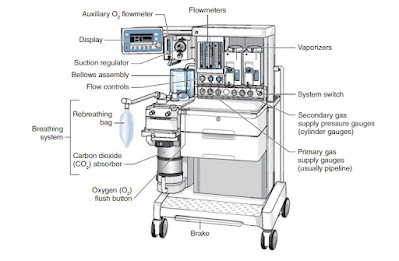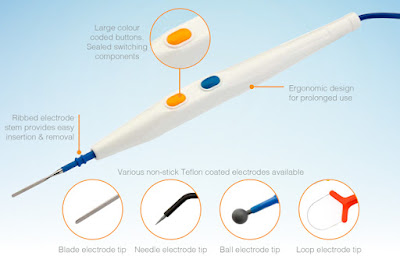Comparing Rigid Containers and Peel Pouches for Sterilizing Medical Instruments
A rigid closed container is a container that is designed to maintain a specific environment inside by keeping external factors such as air, moisture, and contaminants out.
Use of rigid closed container :
- While sterilization wrap will continue to be used to some degree, hospitals are seeking ways to improve upon the current process, reduce re sterilization needs, reduce the use of disposable or single-use products and reduce waste.
- One attractive option is the use of rigid sterilization containers for reusable medical instruments requiring sterilization. Sterilization packaging must allow for sterilant penetration during the sterilization process, prevent microbial penetration during storage and transport as a means of maintaining sterility of processed items, and facilitate aseptic presentation of the contents.
Rigid containers (also called reusable hard cases) are typically made of anodized aluminum or stainless steel, can require a filter or be filter less, and meet all of these criteria. Additionally, rigid containers can protect the instruments from inadvertent drops, can facilitate the organization of the instrument sets and are not subject to any of the breakthrough or re sterilization issues prevalent with blue wrap.

Advantages:
Protection:
- Physical Barrier: Rigid containers provide better protection against physical damage, such as crushing or puncturing, which can compromise the sterility of instruments.
Reusability:
- Durability: Rigid containers are designed for multiple uses, making them more cost-effective in the long run compared to single-use peel pouches.
Ventilation and Sterilization:
- Optimal Sterilization: Many rigid containers have specialized venting systems that allow for efficient steam penetration and drying during the sterilization process.
Organization:
- Structured Storage: Rigid containers often come with dividers or trays that help organize instruments, making it easier to find and access specific tools.
Sterility Maintenance:
- Longer Sterility Assurance: The closed nature of rigid containers can help maintain sterility for a longer period, as they provide a barrier to environmental contaminants.
Transport and Handling:
- Easier Handling: Rigid containers are easier to stack and transport, reducing the risk of damage during movement between locations (e.g., from sterilization to the operating room).
Less Risk of Contamination:
- Minimized Handling: Opening a rigid container typically involves fewer steps and less handling than peel pouches, reducing the risk of contamination during setup.
Disadvantages:
- Cost: Initial investment can be higher compared to peel pouches.
- Weight and Bulk: They can be heavier and bulkier, which might be a consideration in certain settings.
- Complexity in Cleaning: May require more extensive cleaning protocols to ensure all surfaces are sterilized.
Peel Pouches
Advantages:
- Cost-Effective: Generally less expensive than rigid containers, making them suitable for facilities with limited budgets.
- Lightweight and Compact: Easy to store and handle, making them ideal for environments where space is a concern.
- Ease of Use: Simple to package and seal instruments, reducing the risk of contamination during the process.
- Single-Use: Minimizes cross-contamination risks since each pouch is used only once.
Disadvantages:
- Less Protection: While they offer some protection, they are more susceptible to damage compared to rigid containers.
- Environmental Impact: Single-use pouches can contribute to waste, raising sustainability concerns.
- Limited Reusability: They are not designed for multiple uses, leading to ongoing costs for replenishment.
- Sterility Maintenance: Peel pouches may not maintain sterility as long as rigid containers once opened, especially if not handled properly.
Conclusion
The choice between rigid containers and peel pouches largely depends on the specific needs of the facility, including budget, volume of sterilization, and handling requirements. Rigid containers are ideal for long-term use and protection, while peel pouches are advantageous for cost-effective, single-use scenarios. Evaluating the context of use, including types of instruments and storage needs, can guide the decision-making process.
Cost benefit Analysis :
Disposable blue sterile wrap, used for the one-time sterilization of instruments before surgery, comprises a large portion of surgical waste—estimated by one study to comprise 19% of the OR waste stream.
A recent onsite hospital study found that blue wrap may make up as much as 55% of the total volume of disposable plastics leaving the OR. 3. At Mills-Peninsula Medical Center, Central Processing estimated 5-10 torn blue wrap sets per week at a cost of $100/set—costing the organization between $500-$1000 per week and up to $50,000 annually,4 just from repackaging and re sterilization efforts.
A transition to rigid sterilization containers can make long-term financial sense for a healthcare organization. Other noted benefits include a potential reduction in ergonomic wrapping injuries for Sterile Processing Department (SPD) staff, increased ease in keeping track of instruments, the avoided cost of blue sterile wrap and of course, the waste reduction benefits in the OR.
References :
1. Flynn, S. Considerations for use of rigid sterilization containers. Healthcare Purchasing News. October 2010. Accessed on March 18, 2011.
2. Laustsen, G. Greening in Healthcare. Nursing Management. November 2010. Vol. 41, Issue 11. Pp: 26–31. Accessed on March 11, 2011
3. Brannen, L., Guity, A. and DeLoach Lynn, C. Improving Sustainability Performance in a High-Paced, “Big” Cost-Center, and Resource-Constrained O.R. Setting. ASHE
International Summit and Exhibition on Planning, Design and Construction.
March 15, 2011.
4. McGurk, J. Greening Healthcare Through Pollution Prevention: Overview of Waste
Management. Greening of Hospitals Workshop



